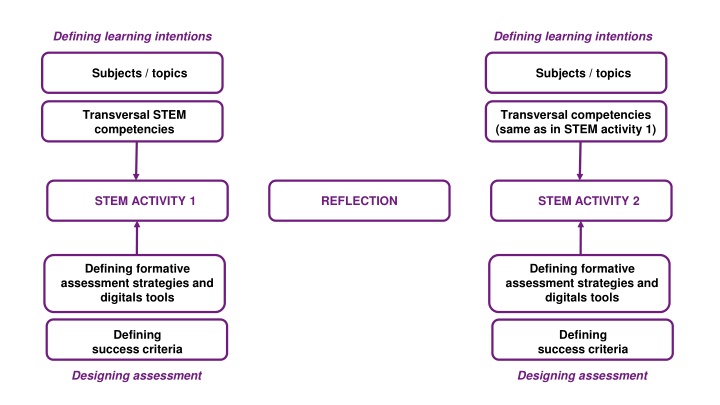Effective Formative Assessment Strategies for STEM Learning
Explore formative assessment strategies and digital tools to enhance STEM learning outcomes. Develop success criteria, design assessments, and engage students in meaningful learning intentions. Utilize transversal STEM competencies to promote collaboration, problem-solving, critical thinking, and creativity.
Download Presentation

Please find below an Image/Link to download the presentation.
The content on the website is provided AS IS for your information and personal use only. It may not be sold, licensed, or shared on other websites without obtaining consent from the author.If you encounter any issues during the download, it is possible that the publisher has removed the file from their server.
You are allowed to download the files provided on this website for personal or commercial use, subject to the condition that they are used lawfully. All files are the property of their respective owners.
The content on the website is provided AS IS for your information and personal use only. It may not be sold, licensed, or shared on other websites without obtaining consent from the author.
E N D
Presentation Transcript
Defining learning intentions Defining learning intentions Subjects / topics Subjects / topics Transversal competencies (same as in STEM activity 1) Transversal STEM competencies STEM ACTIVITY 1 STEM ACTIVITY 2 REFLECTION Defining formative assessment strategies and digitals tools Defining formative assessment strategies and digitals tools Defining success criteria Defining success criteria Designing assessment Designing assessment
Starting point Duration of lessons Number and year level of students Teacher( s) responsible Subjects / topics involved Total amount of lessons during the implementation Artefacts produced during the implementation
Starting point (example) Duration of lessons 45 min Number and year level of students 30 students of year 7 Teacher( s) responsible 1 mathematics teacher, 2 science teachers, and 1 special teacher Subjects / topics involved mathematics, science, arts Total amount of lessons during the implementation 15 lessons Artefacts produced during the implementation PowerPoint presentation
Lesson template Lesson no Date and time Short description of the lesson Which step this lesson is related to Targeted competencies Formative assessment strategies Digitals tool(s) utilized
Lesson template (example) 1 Lesson no 14th of October 2020 at 10am Date and time - Discussion on learning intentions, success criteria, and assessment methods - Discussion on SDG 6 - Discussion on hand hygiene - Hand washing test Short description of the lesson Step 1 (defining a real world problem related to SDG s) Which step this lesson is related to - Communication skills Targeted competencies Sharing learning intentions and clarifying success criteria Formative assessment strategies Classroom computer and screen Digitals tool(s) utilized
Formative assessment strategies: Transversal STEM competencies: Collaboration Sharing learning intentions Problem-Solving Clarifying success criteria Creativity and innovation Questioning Critical thinking Classroom discussions Discipline Knowledge and Skills Giving feedback Self-regulation Using feedback Communication Self-assessment Metacognitive Skills Peer assessment
Defining a real world problem related to SDG s Discussing solution(s) Finding solution(s) Assessing solution(s) Trialing solution(s)























